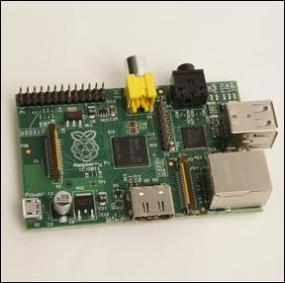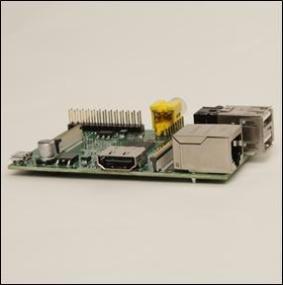
Teach Yourself VISUALLY Raspberry Pi
- Length: 320 pages
- Edition: 1
- Language: English
- Publisher: Visual
- Publication Date: 2014-02-10
- ISBN-10: 1118768191
- ISBN-13: 9781118768198
- Sales Rank: #1122186 (See Top 100 Books)
Full-color, step-by-step guidance for learning to use Raspberry Pi!
Raspberry Pi is an inexpensive, single-board computer that serves as an introductory board for students and developing computer professionals. This image-driven, visual guide shows you how the Raspberry Pi can be easily used as a stand-alone computer, a media center, a web server, and much more. Vivid, full-color images bring Raspberry Pi projects to life, while well-illustrated circuit diagrams and step-by-step practical advice cover everything from working with the included software to branching out into typical but more complex endeavors.
- Covers interesting topics for students and aspiring computer professionals
- Demonstrates how to create custom projects, work with the Raspberry OS, install other operating systems, get the most out of the Raspberry Pi, and much more
- Encourages users to study and tinker with the Raspberry Pi
Teach Yourself VISUALLY Raspberry Pi is an ideal resource for anyone who learns better with visual instruction and puts them well on their way to making the most of this low-cost computer.

A closer look at the Raspberry Pi
So, You’ve Got a Raspberry Pi. Now What?
The Raspberry Pi packs a lot of power into a tiny board, but you’ll need to roll up your sleeves and get your hands on its insides to unleash that power in your projects. If you’re feeling overwhelmed or aren’t sure where to dive in, these quick tips will help get you on your way.
Five Tips for Getting Started with Raspberry Pi:
- Buy a boxed kit: Even if you have a spare phone charger, mouse, or keyboard, they may not be right for the Pi. For roughly twice the price of a bare board, you can buy a boxed kit with all the extras you need – and they’re guaranteed to work.
- Buy the right kit: Some kits sell you boxes of loose electronic parts, wire, and other hands-on extras. You may want a kit like this if you start building custom electronics projects around the Pi, but when you’re just getting started, you need essential USB extras, not loose components.
- Use a monitor or new TV: The Pi has a video output that works with old TVs, but you’ll get a sharper and clearer view of the desktop with a new TV with an HDMI input or with a computer monitor. Remember, if you’re using a monitor, you may need an HDMI adapter cable to get connected.
- Don’t expect a PC: The Pi uses a hands-on operating system called Linux. Linux doesn’t hold your hand and can seem like hard work if you’re new to it. But, with its easy access to hundreds of free software add-ons and increased control, using the Linux OS is completely worth the time it takes to learn it.
- Get creative: Linux is like a kit of software parts. You can use it to build a small web server, create your own small software projects, or to make the tools work together in bigger projects. If you’ve got an idea for a project, go for it. You’ll be amazed at all the things the Pi can do with a little creativity.

A side view of the Raspberry Pi
Time to Start Creating
Raspberry Pi offers so many possibilities for creativity and innovation. Take your time and enjoy exploring. There’s a lot to learn so don’t try to do it all at once. And, don’t forget there’s plenty of help and advice available online from other Pi users if you get stuck along the way.
Table of Contents
Chapter 1: Getting Started with Raspberry Pi
Chapter 2: Selecting an Operating System
Chapter 3: Setting Up Raspbian
Chapter 4: Working with Applications
Chapter 5: Working with the Command Line
Chapter 6: Understanding Advanced Commands
Chapter 7: Networking Raspberry Pi
Chapter 8: Getting Started with Sound and Video
Chapter 9: Programming with Scratch
Chapter 10: Getting Started with Python
Chapter 11: Organizing Information with Python
Chapter 12: Getting Started with Pygame
Chapter 13: Creating Graphics with Pygame
Chapter 14: Adding Custom Hardware







